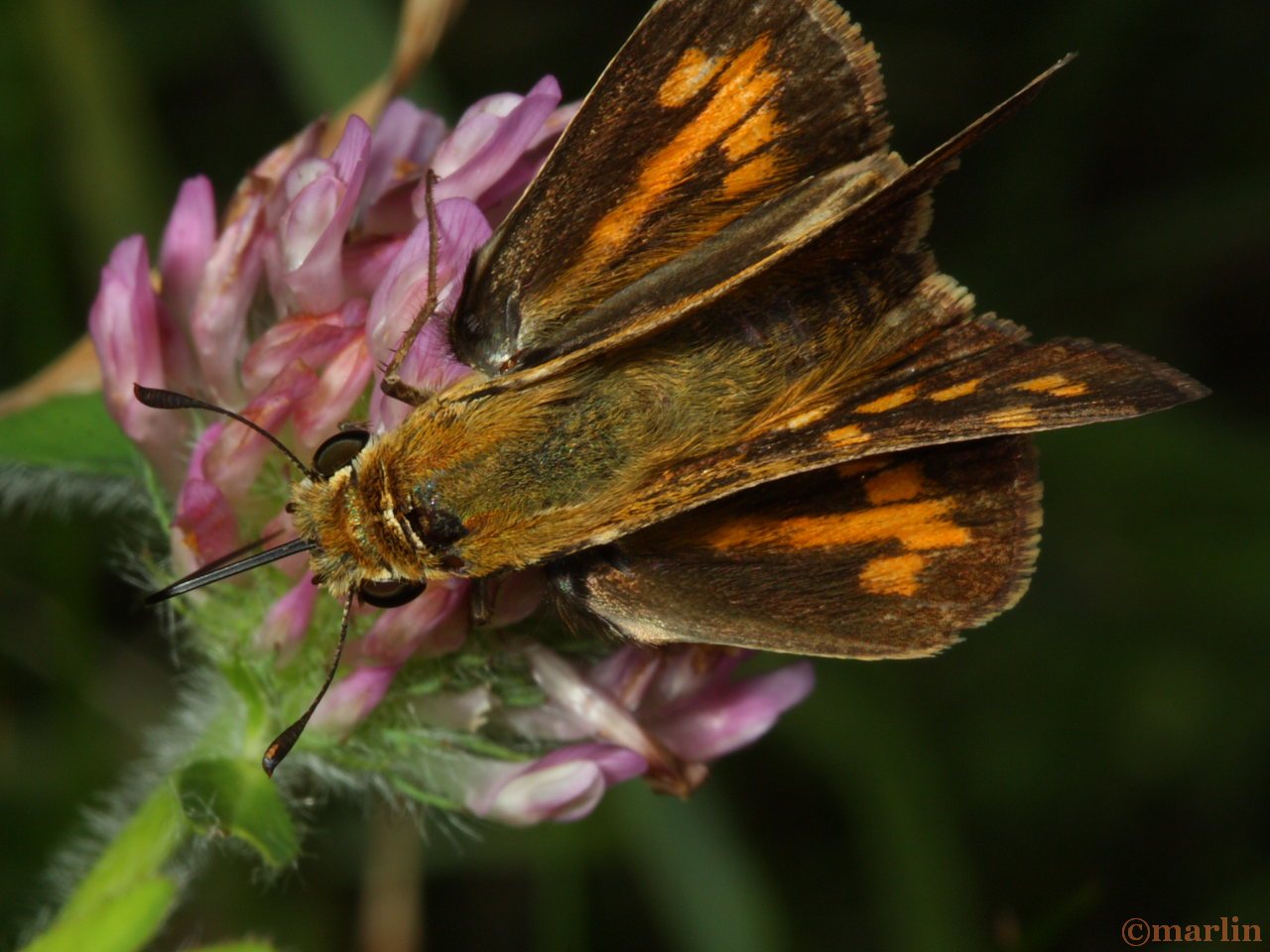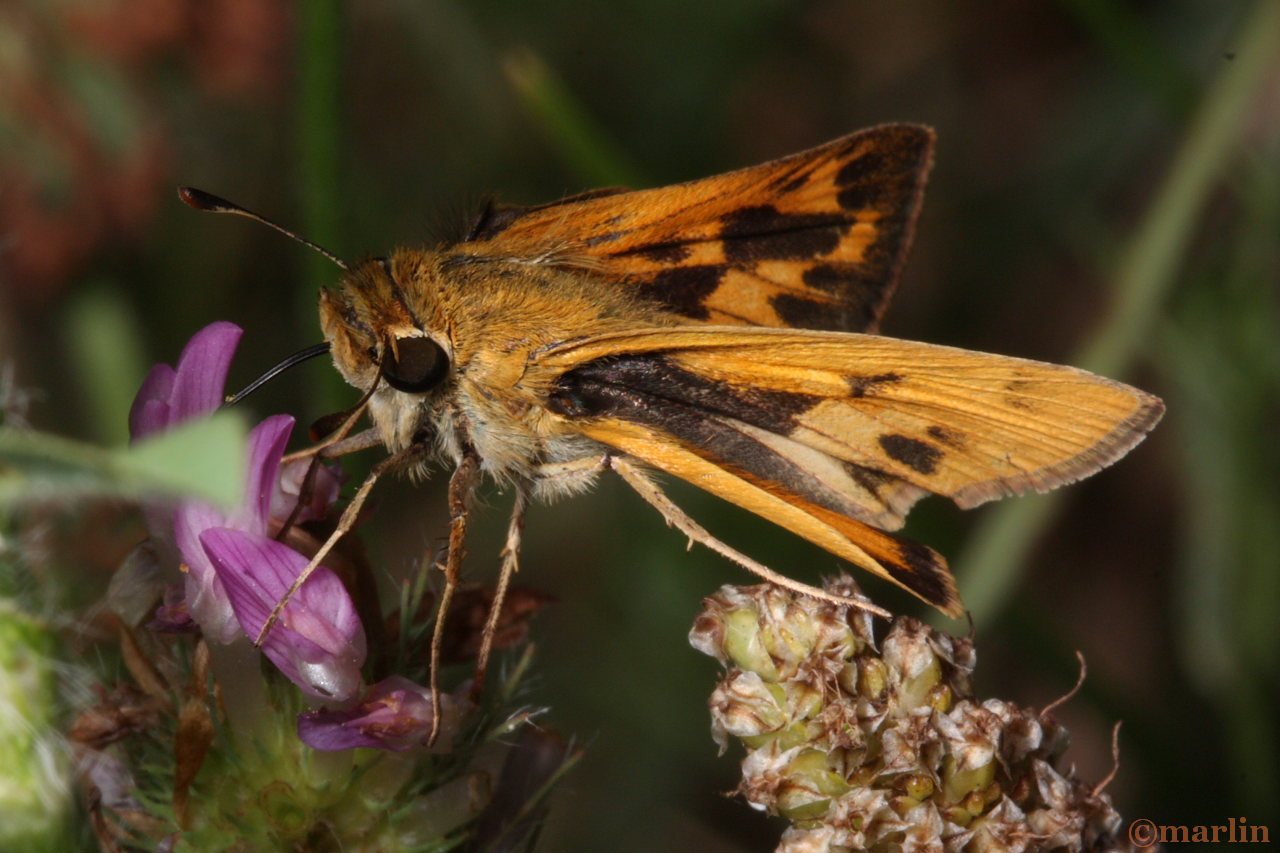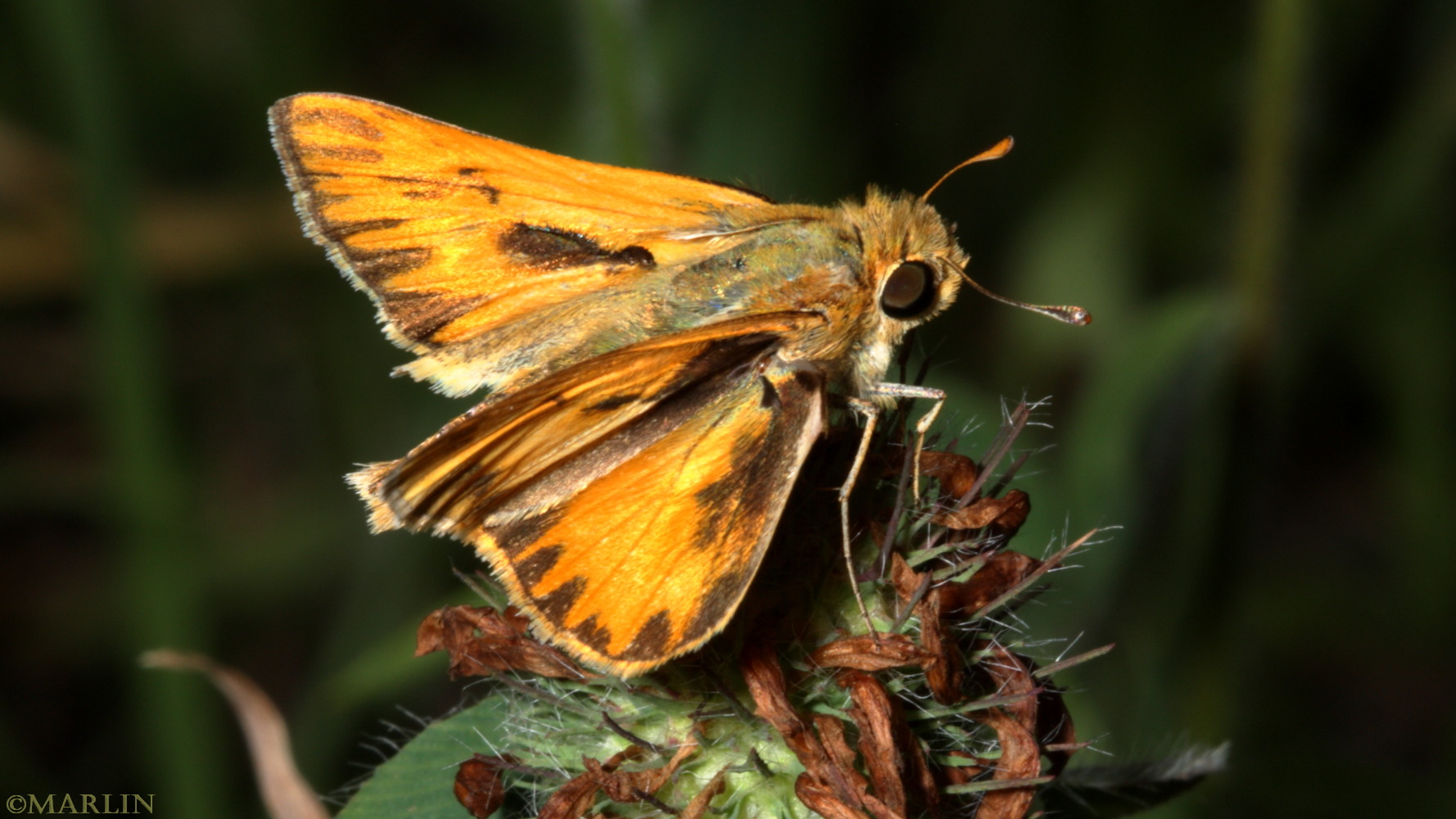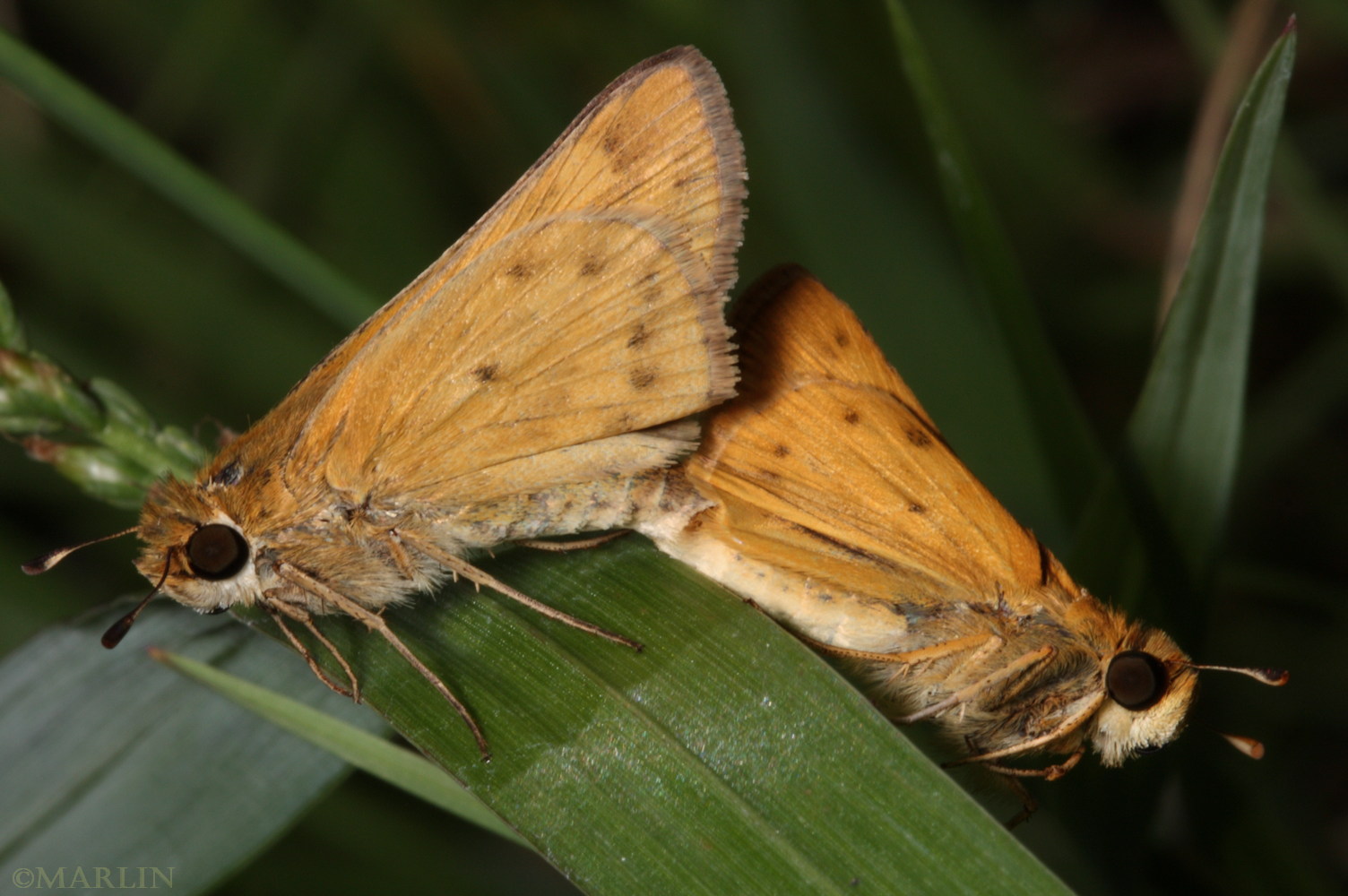Fiery Skipper Butterfly – Hylephila phyleus
 Female fiery skipper above and below
Female fiery skipper above and below
Live adult skipper butterflies photographed at Alpharetta, Georgia and The Morton Arboretum in Lisle, Illinois.
The male of the species wings are brilliantly orange colored, which makes them highly visible as they dart around with their swift and erratic flight. And it’s the female’s comparatively drab paint job that provides her with excellent camouflage, especially in flight. It’s extremely difficult to follow her swooping and continual abrupt changes of direction. Luckily, if you’ve a sunny field with clover and short foliage, they can be numerous enough where finding a new subject can be fairly easy, barely an inconvenience.
 Red Clover is a good bet to attract these speedy butterflies
Red Clover is a good bet to attract these speedy butterflies
All adult true skippers have six well developed legs. Their eggs are tiny, usually less than .1mm. Most skipper caterpillars are green and tapered, and the neck appears constricted. The caterpillars weave silk and leaves into a daytime shelter for protection. Most pupate in loosely woven cocoons. The chrysalises are often coated with a powder or bloom. Chrysalis and caterpillars may overwinter.
Male Above
Skipper butterflies can be divided into five subfamilies:
-
Pyrginae, or spread-wing skippers. These butterflies bask with their wings spread open flat, although there are a few that sit with the wings folded over their back. The cloudy wings sit with their wings partly open. Most spreadwings are patterned in gray, black and white. Caterpillars feed on many different types of plants, especially legumes.
-
Grass Skippers, subfamily Hesperiinae constitute the largest grouping, and perhaps the most challenging for those seeking to identify specimens. They are smaller than the spread-wing skippers, and many are patterned with yellow, orange and black. These erratic flyers sit with their forewings and hind wings at different angles – I think the configuration resembles an F-15 Eagle fighter jet. Grass skipper larvae feed mostly on … guess what? Yep. Grasses.
-
Giant Skippers, subfamily Megathyminae includes the largest skippers. These are rare butterflies, even where there host plants, the Agaves and Yuccas are common. They are very fast and powerful flyers.
-
Skipperlings, subfamily Heteropterinae includes only a handful of small species living in the north and west. They lack the narrow extension (apiculus) of the antenna club. Many skipperlings sit with the wings open flat. They are often lumped into the grass skipper family. Note: Some skippers are called skipperlings but do not actually belong to this subfamily.
-
Firetips, subfamily Pyrrhopyginae. Only one species of this mainly subtropical group inhabits North America: the Atraxes skipper.
References
- Bugguide.net, Fiery Skipper
- National Audubon Society Field Guide to Insects & Spiders (North America), Chanticleer Press 1980
- Eric Eaton & Ken Kaufman, Kaufman Field Guide to Insects of North America, Hillstar Editions 2007
- Arthur Evans, National Wildlife Federation Guide to Insects & Spiders of North America
Family: Hesperiidae – Skippers / Subfamily: Hesperiinae – Grass skippers
Butterflies Home | Butterfly Index | Moths | Moths Index | Insects | Spiders


